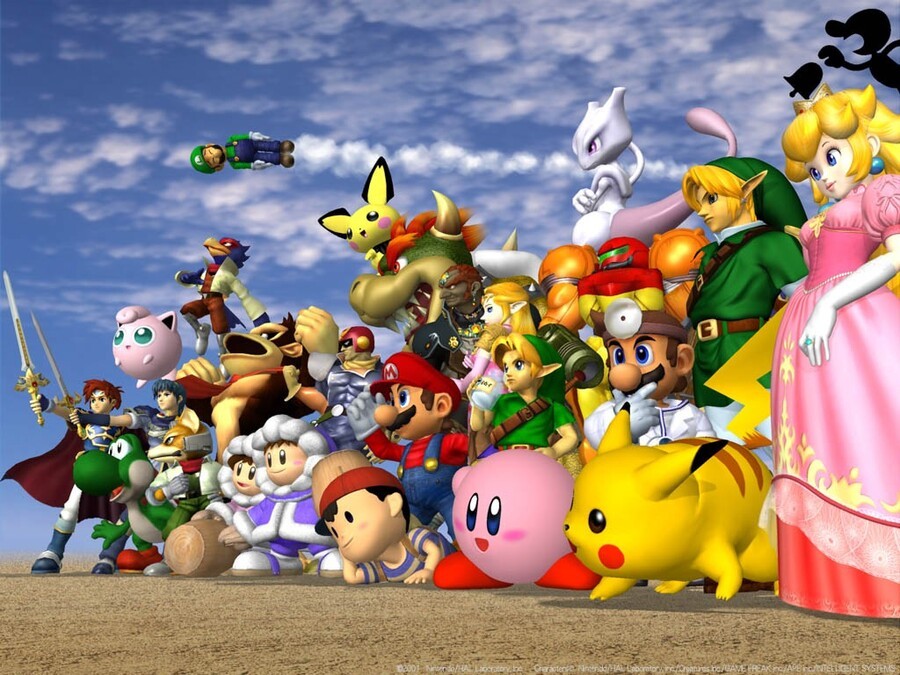
Despite its immense popularity — not to mention the frenzied hype and anticipation that comes during the lead-up to each new instalment — the origins of the Super Smash Bros. series are in fact remarkably humble. When its creator, Masahiro Sakurai, initially came up with the concept in the late 1990s, he didn't have a team of hundreds of staff or a bottomless budget to call upon — he didn't even have Nintendo's approval.
However, what Sakurai did have was an idea. He was astutely aware that fighting games were crowding out the market and not achieving much sales success as a result. Fuelled by creative ambition, his goal was to create something conceptually fresh that would appeal more broadly to home console owners.
 Watch on YouTube
Watch on YouTubeSubscribe to Nintendo Life on YouTube841k
Development didn’t start through the usual official channels; instead, Sakurai enlisted the help of one of his colleagues, Satoru Iwata — you may be more familiar with him in his current role as CEO and President of Nintendo — to help him develop a prototype known as Kakuto-Geemu Ryuoh (Dragon King: The Fighting Game). It was Sakurai’s hope that being able to visually show off his idea would be enough to earn Nintendo’s approval to turn it into a fully fledged project.
It was just as well that Sakurai's idea happily coincided with Nintendo’s key focus at the time: the Nintendo 64. His concept was a natural fit for the system with its analogue joystick and four controller ports. However, the prototype hadn't officially been sanctioned by Nintendo at this point, which was slightly problematic as Sakurai wanted to use the company's characters to instil atmosphere into his project, a key ingredient which he felt had been missing up until this point. Knowing he wouldn't get permission upfront, the designer took the bold decision to insert them anyway and ask later. It was a wise move: the prototype was eventually approved, and Sakurai was tasked with creating what then became known as Super Smash Bros. for the N64.
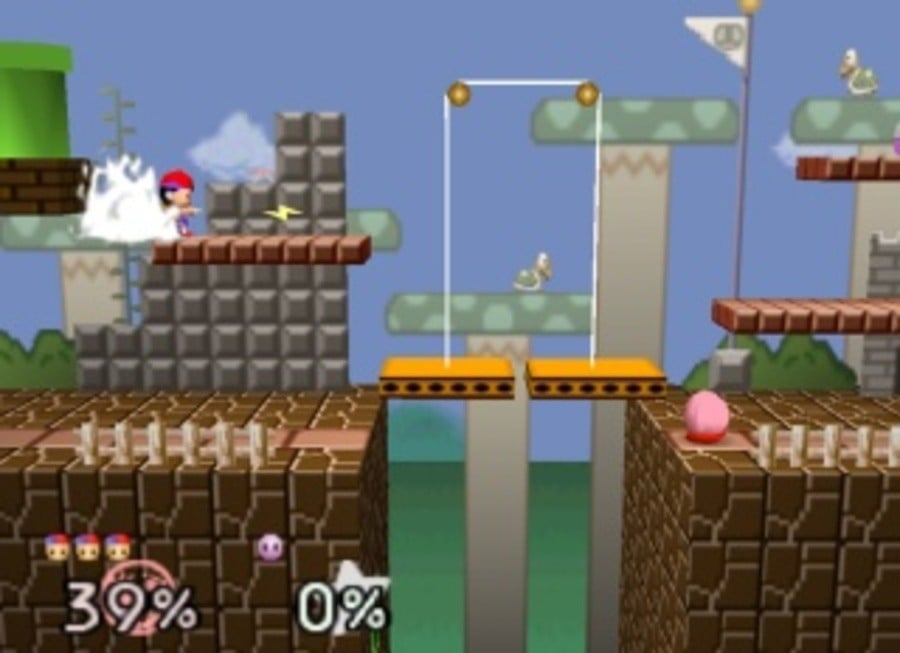
However, winning over the bigwigs at Nintendo didn't guarantee that the game would be an automatic success; Sakurai was only given a small budget to develop Super Smash Bros., and this minimal resource also accounted for promoting the finished product. As a result, the first game didn't feature the wealth of content that players have now come to expect from the series. With only 12 characters (four of which must be unlocked), nine stages and a limited single-player mode, you could be forgiven for thinking that Super Smash Bros. wouldn't have held attention for very long. It very much had the opposite effect when it launched in 1999, though, drawing in legions of gamers for months on end. Initially intended only for the Japanese market, it garnered nearly two million sales in its homeland, earning itself an international release later that same year. It went on to sell another three million copies globally.
The key to the game’s lasting success lay not in its amount of content, but rather its novel gameplay concept, which has since remained firmly at the centre of each instalment. For the uninitiated, Super Smash Bros. doesn’t incorporate the health system typically found in most traditional fighting games — instead, each player has a percentage counter which increases as damage is taken; the more damage you accumulate, the further your character can be sent flying when hit by a powerful attack. The goal, therefore, is to knock your opponents off the screen while also ensuring you stay within it. Stages are filled with hazards and usable items spawn with the purpose of augmenting the frantic nature of the gameplay.
As a result of this unique approach — and the intuitive control setup in which all characters share the same, simple button and joystick input for performing moves — Super Smash Bros. doesn't force the player to learn intricate combos. Moreover, it encourages a slightly different type of metagame, with the focus being more on aspects such as positioning and playing mindgames with your opponent. It may have featured rudimentary, low-poly visuals (most likely to help keep the frame rate as smooth and as consistent as possible) and limited options, but the depth of the gameplay is what ensured that Super Smash Bros made a regular appearance at Nintendo 64 multiplayer gatherings across the globe.
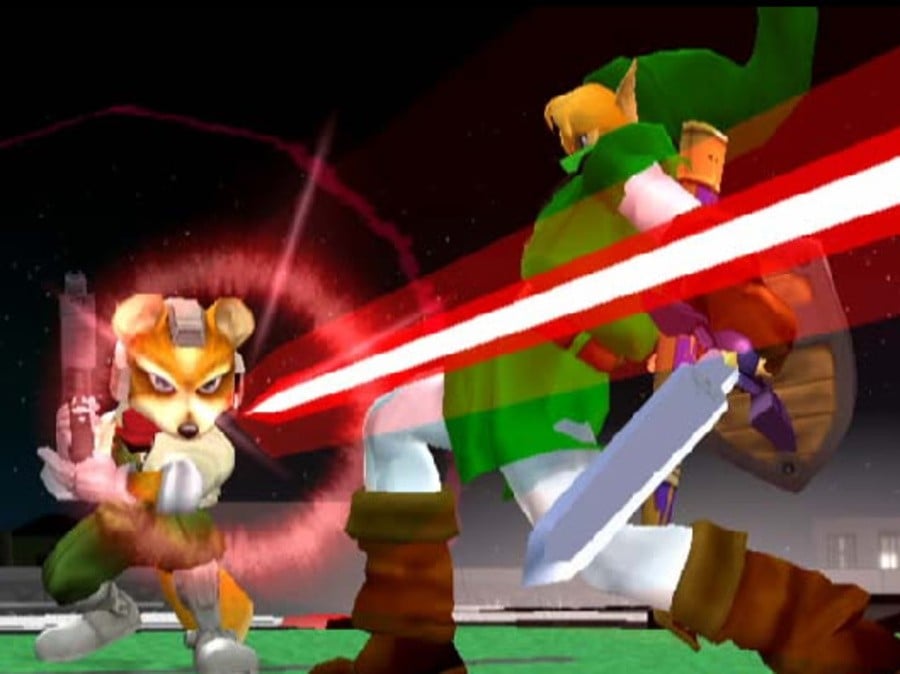
Following the surprise success of the first game, Nintendo quickly tasked HAL Laboratory with developing a sequel, Super Smash Bros. Melee, for its then upcoming system, the GameCube. Sakurai served as the game’s director, and with a vastly increased budget and superior hardware he was able to create a far more comprehensive and polished experience. The game released in late 2001 in Japan and North America, while PAL regions had to wait until the next year as the system had not yet been released in these territories.
Melee’s most notable improvement over its predecessor was undoubtedly its visuals. Slickly presented with smooth, detailed characters models and running at 60 frames per second, the gameplay is considerably faster too. The visual overhaul wasn’t the only change, and despite only arriving a mere two years after the N64 title Melee came packed with major gameplay refinements and considerably more content. The 12 original cast members returned along with 13 more characters (14 if you consider Zelda and Sheik as two separate characters), along with many more stages on which to do battle. The game also featured a more fleshed out single-player segment, which included an adventure mode with themed stages. The addition of trophies (itself an evolution of the original games’ character bios feature) introduced a collecting side element to the series, and is one which will be making a return (with even more trophies!) in both Super Smash Bros. for Nintendo 3DS and Super Smash Bros. for Wii U.
While the gameplay mechanics retained the relatively simple setup of the previous title, players were able to air-dodge and spot-dodge for the first time. Melee also brought with it many unintended features as a result of glitches and possible physics exploits. For example wavedashing, the most prominent of these, enables you to effectively slide around the stage by jumping and immediately air-dodging diagonally down into the ground. It is considered advantageous as it allows you to move your character around the screen while retaining a stationary stance, meaning that you’re able to do things that you wouldn’t usually be able to do when running, such as smash attacks, jabs and grabs.
For the average player, wavedashing and other unofficial techniques were of little relevance, but the reason why they’re so significant is because they helped to catapult Melee into the competitive gaming scene. The advanced level of control required to perform many of these actions quickly created a clear distinction between pro and more casual players. As a result, Melee has enjoyed great lasting appeal, and still makes regular appearances at many high-profile gaming tournaments. In terms of overall sales, more than seven million copies were sold, making it the best-selling game on the GameCube; this figure is even more impressive when you consider that only 22 million GameCube systems were sold.
The next and most recent entry in the series, Super Smash Bros. Brawl, arrived in 2008 when the Wii was experiencing the height of its popularity. When the game was originally announced during Nintendo’s E3 2005 press conference it came as something of a surprise to Sakurai who had been previously told by his former colleague, Satoru Iwata — who had risen to become President and CEO of Nintendo by this time — that if a new title in the series were ever made that the company would want Sakurai to oversee its development.
Nevertheless, a private meeting between the two was arranged after the conference, and Sakurai agreed to head up its production. Having resigned from HAL Laboratory in 2003 due to his concerns over the studio’s heavy emphasis on producing sequels, Sakurai didn't have his previous team to call upon. Instead, Nintendo opened a new office in Tokyo with the team — much like the game's crossover cast — being made up of an all-star roster of 100 staff from various Japanese studios, including Game Arts, Monolith Soft and Paon. Development officially began in 2005 with the game originally intended to be a Wii launch title, but a difficult development period resulted in numerous delays.
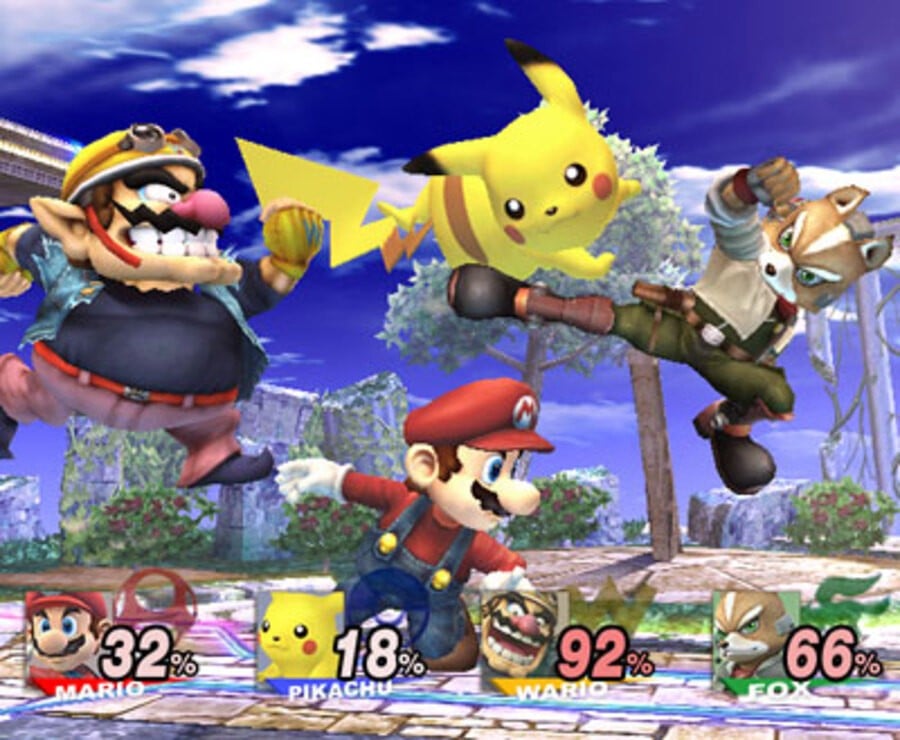
Sakurai’s aversion to sequelitis in the games industry clearly influenced his plans for Brawl; it is a considerable step up from Melee in terms of scope and the amount of content — players can choose from a whopping 39 characters and 41 stages. This game had the special honour of taking the series into the online realm for the first time, although it’s worth noting that the implementation suffered from limited play options and considerable lag.
This flaw aside, the game was filled to the brim with content. While Melee’s adventure mode had flirted with themes and came with a relatively basic storyline, Brawl’s Subspace Emissary fleshed out the game’s universe for the first time. To what extent it succeeded in telling a coherent story is debatable — a difficult task when the core premise is a crossover between so many franchises — but it was nevertheless presented superbly through a wealth of high-quality cutscenes.
In addition to this, players could still enjoy modes previously found in Melee, as well as a new boss battle mode and even a shoot ‘em up minigame in which it was possible to win trophies. Determined to fit as much content on to the game disc as technically possible, Sakurai even included short game demos with the goal of providing further background on some of the characters (and also because Nintendo undoubtedly wanted to advertise the availability of these games on its Virtual Console service).
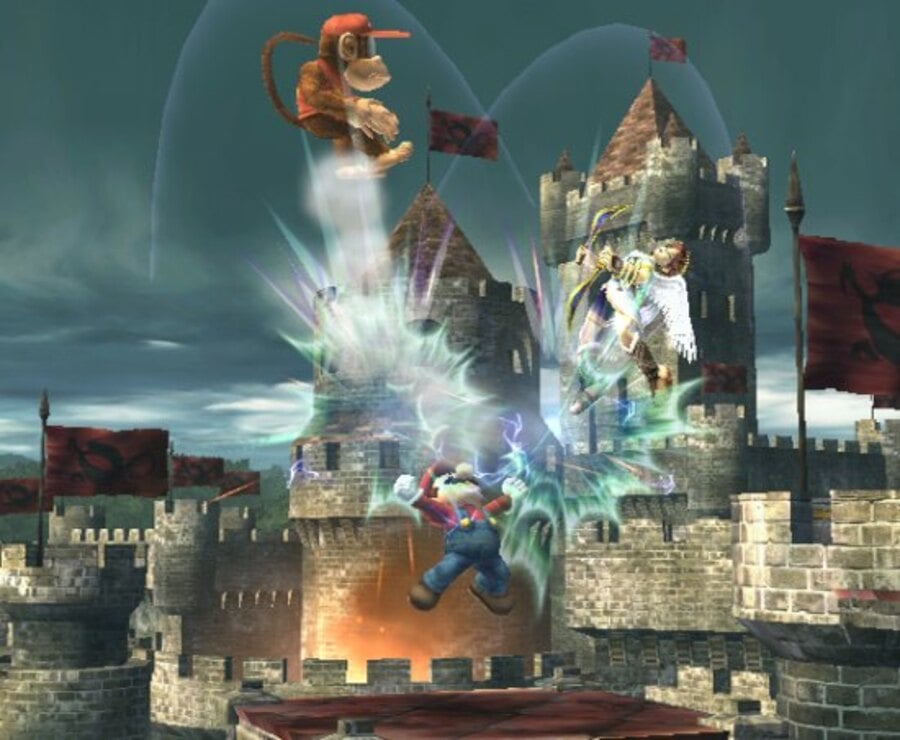
A number of gameplay and physics changes came with Brawl, primarily as a response to the unintended glitches and exploits that were uncovered in Melee. Given that it was being released on Wii, the game was advertised as being accessible to all (and included basic Wii remote controls), although it never received the same degree of mainstream attention that Mario Kart Wii or New Super Mario Bros. Wii did. The removal of advanced techniques and the insertion of a tripping mechanic, which would cause characters to randomly fall over during battles, created two distinct subcategories in the competitive Super Smash Bros. community: those who adopted the game and those who continued to play Melee. Nevertheless, Brawl still has a considerable presence in the tournament scene even today.
For the majority of players who were less concerned with the finer gameplay details, Brawl introduced a number of fun features which arguably make it the most frantic game in the series to date. This was the first game in which Smash Balls could be used (which will also return in the upcoming 3DS and Wii U games), an item which upon activation enables the player to use an overwhelming powerful ability which more often than not tips the battle in their favour. Non-playable Nintendo characters could appear on the battlefield through the use of an assist trophy and either attack or aid players.
Not only that, but Solid Snake of Metal Gear fame and Sonic the Hedgehog were given the prestigious honour of being the first third-party characters to enter the fray. With such a large roster of playable and non-playable characters, hundreds of trophies and plenty of nods to Nintendo’s rich history, Super Smash Bros. Brawl very much felt like a celebration of everything that the company had achieved up until that point in time; perhaps Brawl’s most notable achievement was that it finally allowed gamers to answer the age-old question of who would win in a fight between Mario and Sonic.
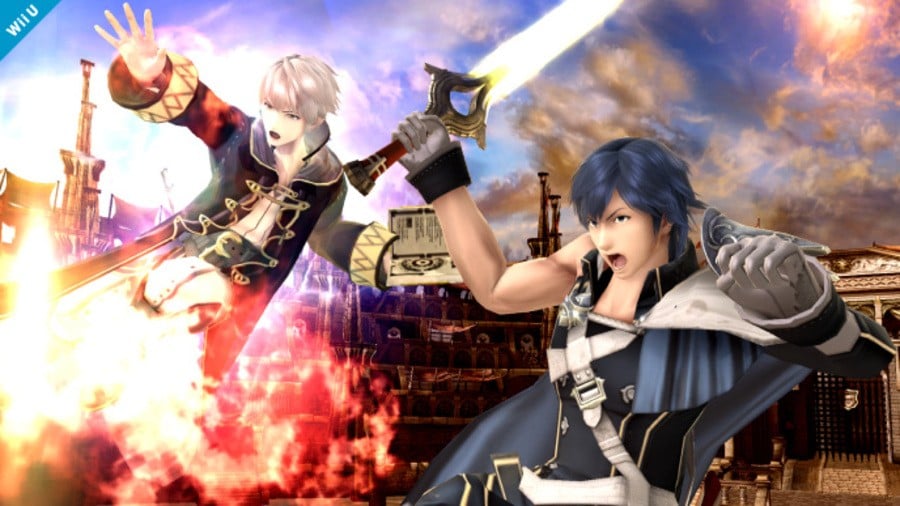
Back in 2008, during an Iwata Asks interview about Super Smash Bros. Brawl, Masahiro Sakurai and Satoru Iwata both expressed their disbelief at how their original joint project had grown to become one of Nintendo’s most significant and important franchises. Of course, a game in which multiple Nintendo IPs merge into one sounds like something that would be guaranteed commercial success, regardless of how good a game it actually was. However, what makes Super Smash Bros. truly stand out is that it brings something remarkably creative and different in terms of gameplay and fun; while the core premise has remained more or less the same since 1999, the series has evolved considerably since its first, relatively primitive outing on the N64.
With two new versions shortly due to arrive on 3DS and Wii U, Sakurai and his team may not be revolutionising what the series has to offer, but then Super Smash Bros. isn’t in need of change or repair. However, the ability to finally enjoy one version of it on a handheld system and the other in glorious high definition — both complete with new additions to the character roster — will nevertheless help to further cement the series’ appeal for many more years to come.





Comments 44
Great article. Nice retrospective guys.
I'm too hyped for October. Man, this can't come soon enough.
Nice essay! It probably would benefit from being separated into pages, but it's otherwise a good read if anyone has the time.
If anyone wants to know more about competitive Smash Bros., I highly recommend watching "The Smash Brothers" documentary. Episode 1 is below!
I am so hyped now.
Smash is probably my favorite Nintendo series mostly due to Melee being so awesome, played and own all of them though only got properly into the series Melee. Have a bunch of memories playing with my big bro and friends after school.
Hmm Not sure I agree with the last paragraph the series could definitely be helped with a more competitive mind set. The article as a whole was great though, it is strange how these kind of series come about but in this instance I feel Smash benefited greatly from a Nintendo character themed approach then going for a serious approach. Hopefully this game be supported after launch with patches to maintain a good balance.
Gonna be an awesome Fall/Winter:
3DS Smash and Bayonetta in October
MK 8 DLC in November
Wii U Smash in December (presumably)
My wife is gonna hate me. lol
Sucks Chrom is limited to a cameo. Anyways great article I'll show this to my family so they can understand the series. Too bad the roster of the new game appears to have been leaked online(not confirmed) all the work they put into these games just for someone to spoil the whole experience?
@Jazzer94 Yes and no. I think the balance is pretty spot on. If you give Smash too competitive of a mindset, casual Smash fans are less likely to have fun. Many of my Smash friends got pretty alienated from Melee once certain people in our group could pull off the wavedashing and other high-skill moves (and would use them liberally). I think the death of wavedashing and other "techniques" along those lines is a good thing, because it evens the field a bit more. Granted, tripping wasn't the way to go, but it was a noble effort.
I think trying to appeal Smash to the "EVO scene" only would be disastrous for the potential sales, because that community is almost assuredly going to jump on the new Smash for at least a little while anyways. They're always looking for new and good fighters. I'm almost certain this will receive much better competitive reception than Brawl too, considering what we've seen from the pre-release tournaments so far and the word of mouth of Smash pros like HB and ZeRo. (They've said it's not as tight as Melee, yes, but I think that's a good thing to be honest. My opinion there, I guess.)
@DragonbornRito Reducing the skill level all round is never the way to go about things and that is exactly what happened with Brawl. I've never had problems playing with people who don't play smash at a competitive level on Melee, most people aren't even aware of the techniques in the first place and really only a scrub would use them against people who can't as it is boring, If people are trying to get good they will be looking for players in there skill range competitive players aren't looking to go toe to toe with casuals. I don't know about this game having a strong following TBH, it's fun don't get me wrong but is lacking in areas, maybe I'm wrong but most people aren't super keen.
@Jazzer94 I'm hoping pivot cancelling and other ATs (there's another dash cancel that's being discussed right now) add back some of the depth that Brawl lacked. My problems with wavedashing are that the input is unnecessarily complicated, and that as an exploit, most people don't even know it exists. (It also looks unnatural and I find it off-putting to watch.)
I forgot how creepy Yoshi looks in Melee. lol
Also hoping the 3DS/Wii U version will bring back an N64 stage or two.
Quits job because he didn't like focusing on sequels. Takes job of making a sequel.
We still have no idea of what single player mode there will be on Wii U, hope it's good.
I remember joining the petition with ngamer / n64 magazine to get smash localised and into the west. I'm glad we put the effort in.
By the way, I was never a bad player at all but I still only use the wii remote horizontally. Yep, I am strange, but it works wonders.
Fantastic feature guys! This is easily my favorite Nintendo series - nay, series in general - of all time. I was a proud owner of Smash 64 as a kid, and it was probably my second favorite game behind Mario 64. But then, when Melee came out, my brothers and I played it into the ground. It became my favorite game of all time, and it kept me occupied for years. Smash was the sole reason I bought a Wii, today I'm six challenges away from finally completing Brawl, and I plan on getting 100% on the 3DS and Wii U versions when they come out, too. Super Smash Bros. has always had and will always have a special place in my heart.
Great read! I thoroughly enjoyed it. I still love the commercial for the very first Smash Bros. It was hilarious.
I had the opportunity to play SSB4 and I have to say it feels more competitive than Melee, the combo system is back and better, but with wavedashing gone you have to think about how to execute them and that makes it more challenging and fun.
So hyped for SSB4
@noctowl Yet, another Nintendo fan that hates options, other people's fun, and the competitive scene.
Beautiful.
I just want Smash 3DS/Wii U to be fast and offensive oriented.
Brawl was slow defensive play favored.
I didn't even know about how to correctly play Melee competitively until long after I dropped it, but it was always more fun than Brawl to play just because the game was fast and not SLOW like Brawl.
I was open minded when Sakurai said he was putting all the intentionally anti competitive stuff into Brawl, but it flat out didn't work out.
@Rafie:
"...So happy together...."
Great article
smash bros was my first n64 game with my n64 when i got it for my birthday plus controllers
@Senario
So true. The irony is how it's these certain non-competitives who complain that competitives try to force people to play a certain way (which isn't true, by the way), and then follow it up by...insulting the way competitives like to play. (Not all non-competitives are like this, of course.)
@Rafie I agree. I always loved watching live action versions of Mario, Yoshi, Donkey Kong, and Pikachu holding hands and dancing in a meadow to a cheesy friendship song...only for one of them to accidently get tripped, and suddenly they're at each others throats with an agressive voice-over hyping up the game.
I love ALL the Smash games equally (unlike most people...), and that's saying something, because I play Melee at a heavily competitive level. I adapt to my surroundings (again, unlike most people...)
And a Smash Bros. discussion is already off the rails. What a surprise.
Smash 64 is still my favorite.
I have always adored the Smash series. Each game is a masterpiece in and of itself, and usually a snapshot of Nintendo at that moment in time. Each game is a love letter to the previous console. I personally can't wait for Smash four.
smash has been a wonderful thing for nintendo. and to think the original game didn't even have real characters.
history of smash if you please: https://www.youtube.com/watch?v=eqmCNFNaLIo
And now we're pretending Marvel Vs. Capcom 2 is actually balanced. Amazing.
How about we stop these anti-casual anti-competitive attitudes and, like, discuss the series instead? You know, the games themselves instead of trying to make the other side seem stupid?
@Senario No, you just have to keep derailing the topic to point it out over and over. Who cares?
All the MvC games are horribly unbalanced. There is no objective "best" one.
@SparkOfSpirit
You're reading a lot into this discussion that isn't there.
@Dr_Corndog Because this is the first and only Smash Bros. discussion ever on this site.
If you can go through one of these topics that doesn't devolve into an argument between both sides, then I would be rather surprised.
The first is still my favourite, there's such a rawness to it.
Wow brilliant article!
Just roughly a month left! Unless you live in Japan, in which case it's only a couple of weeks.
I remember when I got Melee and Brawl on release day...there's something very special about that moment you finally put your hands on the newest Smash Bros....you just know you're in for hours upon hour of pure gaming bliss.
I look forward to that feeling again this October and again in November/December
To me, each installment should have had a portable companion, but hey, can't win 'em all. Glad the series made its long-overdue handheld debut!
@Senario Yeah, probs. I apologize. I guess I just wasn't haven't a very good day.
can I just add to this discussion a sincere: yaaaawn.
I'm happy to see the series continue as an unparalleled nap producer.. heres where fans claw my face off.
Can't wait to get the next installments in my favourite video game series!
Super Smash Bros is probably the greatest Fighting game franchise of all times, and then Tekken, then Street Fighter then Mortal Kombat for me ;D.
Great Article.
Do a history of the sexualization of Smash Bros next.
Really great read guys! Very fair and written well
Show Comments
Leave A Comment
Hold on there, you need to login to post a comment...